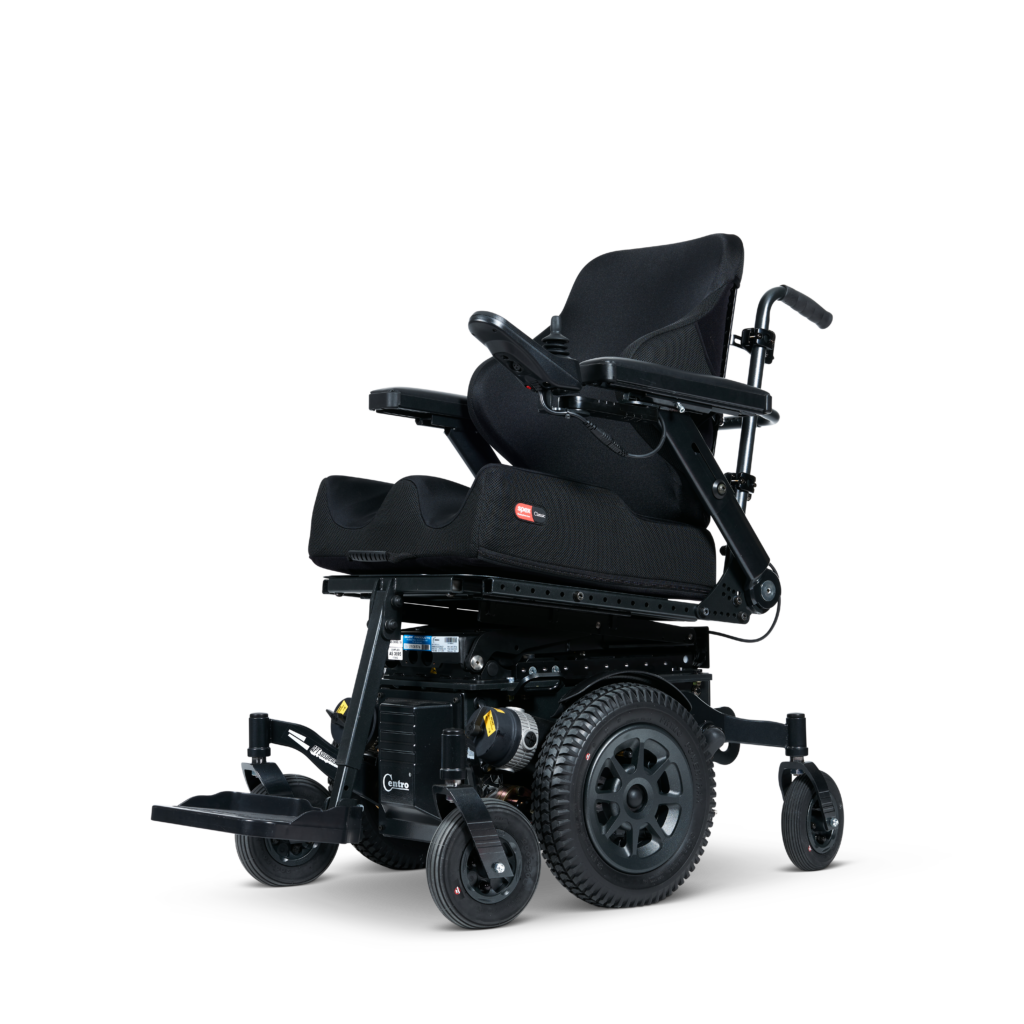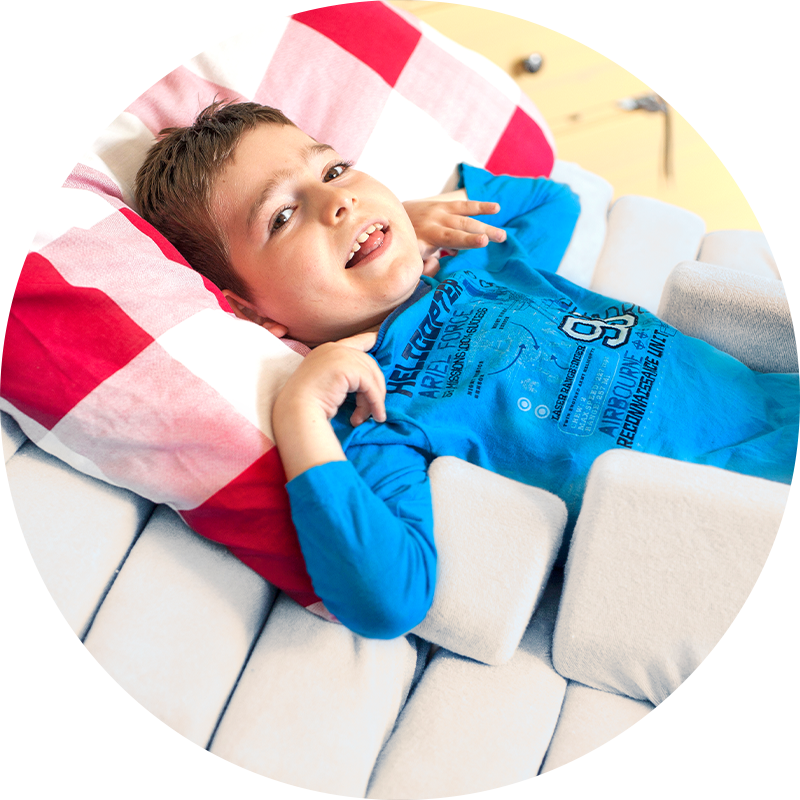Our innovative postural support products are developed with care and expertise to help children with special postural needs to live happy and fulfilling lives as we continue with our mission of a better life and brighter future for children with special needs.
We spend on average over a third of our lives sleeping and lying (Hill & Goldsmith, 2010). In children this duration is often greater, particularly early childhood (Chaput, Dutil & Sampasa – Kanyinga, 2018) and will be even greater still for those who are immobile or with complex medical needs.
greater, particularly early childhood (Chaput, Dutil & Sampasa – Kanyinga, 2018) and will be even greater still for those who are immobile or with complex medical needs.
For those children who have difficulties adjusting and maintaining their own position against gravity this is a significant amount of time for their posture to be left unmanaged. Gravity is constant and does not ‘switch off’ whilst we are lying. Without the appropriate postural care, these children will regularly adopt preferred lying positions with the influence of gravity, tone and muscular imbalance (Sato, 2020). These positions are often called ‘destructive postures’ (see images below) and if left unmanaged can often lead to postural changes such as muscle contractures, joint subluxations and spinal curvatures (Bayliss, 2020). This in turn can have a significant effect on an individual’s independence and function, quality of life, skin integrity, comfort and life expectancy (Casey, Rosenblad & Rodby-Bousquet, 2020).
Imagine a child with movement disorders trying to move into a sitting position after a long period resting in the above lying positions – how difficult do you think this will be? Think about how your body feels after holding the same position for a long time and how you move from lying to sitting yourself.

Your child’s therapist will be able to guide you on the appropriate postural management programme and should tailor it to your child’s individual, unique needs. Considering night time positioning, whilst managing posture is the key concept, the delicate balance of maintaining or improving sleep quality requires a multi-faceted approach.
The ultimate goals for any lying and night time programme should consider maintaining/improving not only posture, but also sleep quality, function, comfort and pressure relief (Humphries, King & Jex, 2019).
We strive to produce products that will help achieve these goals and that are clinically supported. For example, one clinical study has suggested our Dreama sleep system may have positive effects on hip stability and range of movement, and pain reduction (Hankinson and Morton, 2002).
We advise gradually introducing the supportive components for the Dreama to help build tolerance, minimise changes to routine and minimise sleep disruption. Early intervention is extremely important, as destructive lying postures are adopted early in the development of children with movement difficulties and can quickly become associated with a child’s comfort or ability to sleep (Bayliss, 2020). These postures can then become very fixed during times of growth if left unsupported.
Children are long developing their skills in lying and floor mobility before they can sit and stand, and the ability to lie with good posture is inseparably linked to the ability to sit and stand with good posture. A consensus statement regarding postural management for children with Cerebral Palsy recommends postural management in lying should begin as soon as is appropriate after birth for those with the most severe motor difficulties (Gericke, 2006).
It is also useful to remember that Dreama can also be used for supporting lying postures through the day as well as the night.

- Dreama – a pressure reducing 24hr positioning system, suitable for children and adults.
- Ly-On – Feeding, Education and Access System – The ideal platform to build a structured yet safe and comfortable posture for users up to 70kg who have complex postural or medical needs.
- Ziggy – Ziggy is a therapy product that can be used for play, support, therapy, rest or even imaginative play. It’s incredible versatility and flexibility mean it can aid a wide variety of therapy uses.
- Rolls, Mats & Wedges – A range of soft, colourful and comfortable supports in various shapes and sizes, which can be used to create play opportunities and for specific therapy treatments.
- Baylis, M. 24 Hour postural care and use of sleep systems in cerebral palsy. Paediatrics and Child Health. 2020, 30(8): 296-302.
- Casey, J., Rosenblad, A. & Rodby-Bousquet, E. Postural asymmetries, pain, and ability to change position of children with cerebral palsy in sitting and supine: a cross sectional study. Disability and Rehabilitation. 2020; 3:1-9.
- Chaput, J.P., Dutil, C. & Sampasa-Kanyinga, H. Sleeping hours: what is the ideal number and how does age impact this? Nat Sci Sleep. 2018; 10: 421-430.
- Gericke, T. Postural Management for children with cerebral palsy: consensus statement, Dev Med Child Neurol. 2006; 48(4): 244.
- Hankinson J and Morton R.E. Use of a lying hip abduction system in children with bilateral cerebral palsy: a pilot study. Developmental Medicine & Child Neurology. 2002; 44: 177-180.
- Hill. S. & Goldsmith J. Biomechanics and prevention of body shape distortion. Learn Disabil Rev. 2010; 15: 15–32.
- Humphries, G., King, T. & Jex, J. Clinical Practice Considerations for postural support in lying for children and adults with neurodisability. 2019.
- Sato, H. Postural deformity in children with cerebral palsy: Why it occurs and how is it managed. Phys Ther Res. 2020; 23(1): 8-14.








